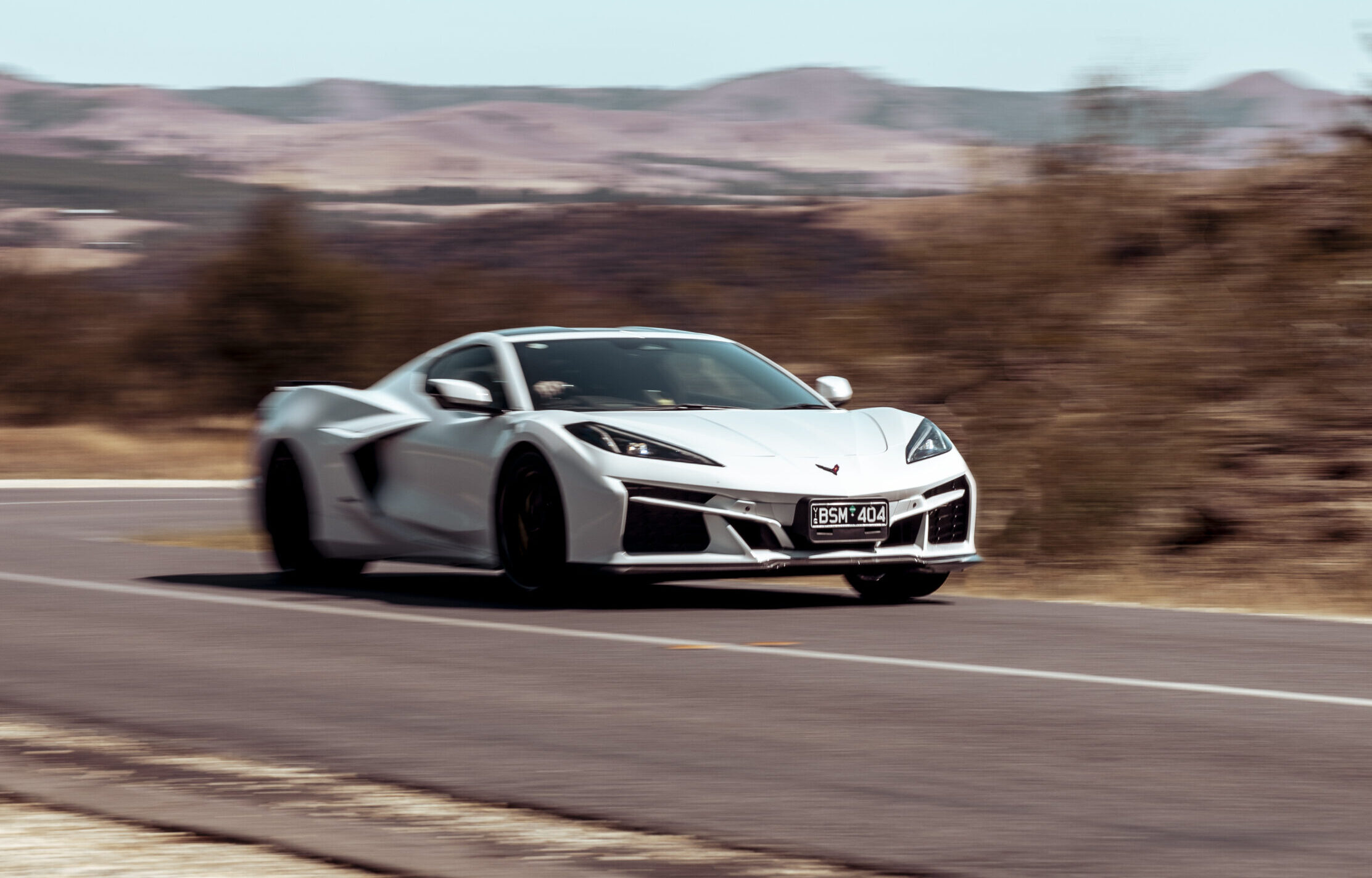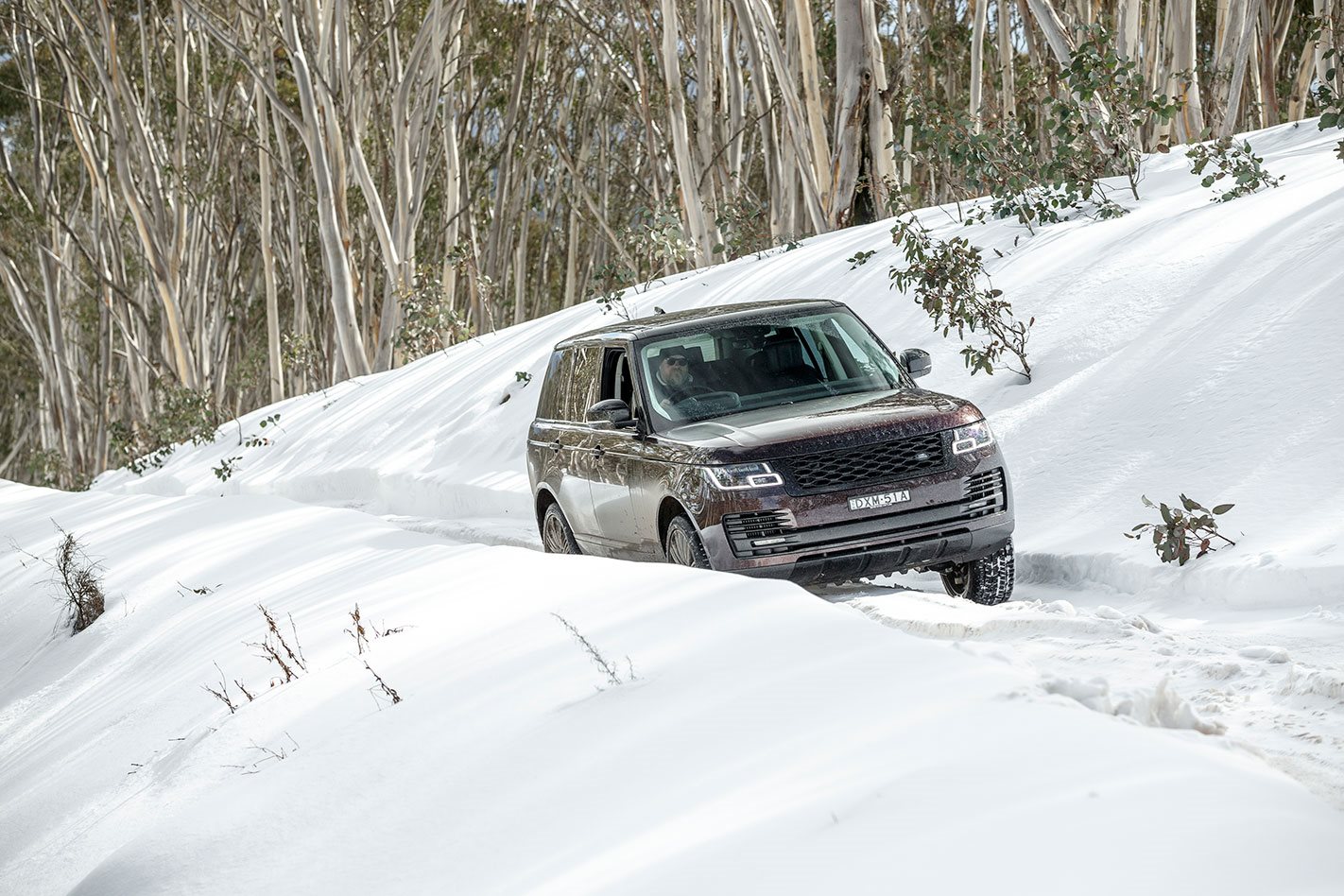
Over the course of nearly five decades, Range Rover has become synonymous with an elite set who like to get outdoors and take their homely comforts with them.
Since the very first model began its association with the well-heeled, famous and even the royal family, other more accessible models have added new monikers to the range such as Evoque and Velar, but it’s the original that continues to represent the pinnacle of off-road luxury.
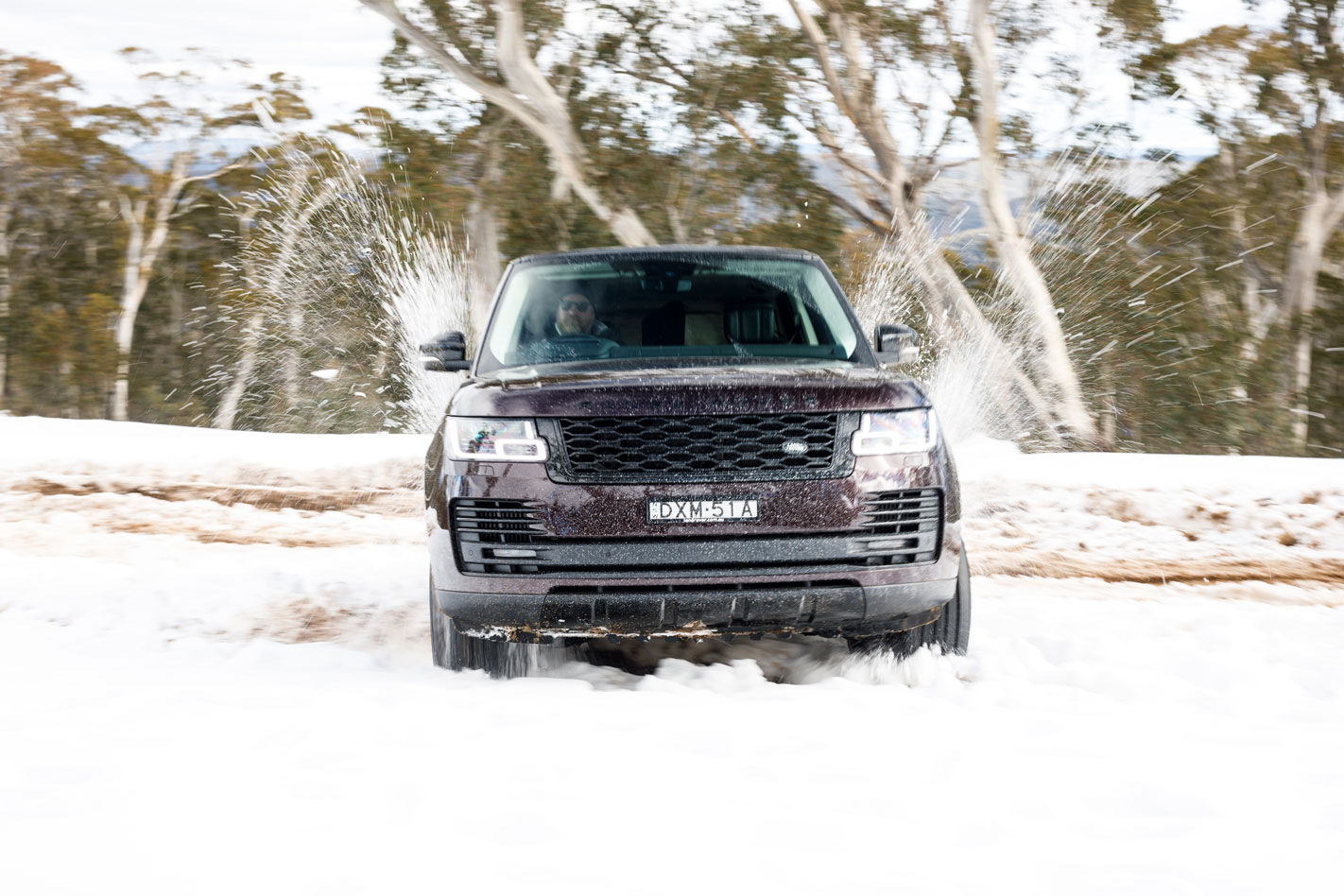
No model name required. This is simply the Range Rover.
VALUE
If you simply wanted to put a Range Rover on your driveway the line-up kicks off from $183,300 for a V6 diesel-powered Vogue. However, you can keep adding equipment, power and even a longer wheelbase to stretch the pricetag all the way up to $373,611, where you’ll find the supercharged V8 SVA Autobiography.
But roughly in the middle of the range you’ll find a V8 diesel powered version that brings the same imposing on-road presence, a generous amount of equipment and a mighty powerplant that doesn’t drink as much as the petrol-powered flagships.
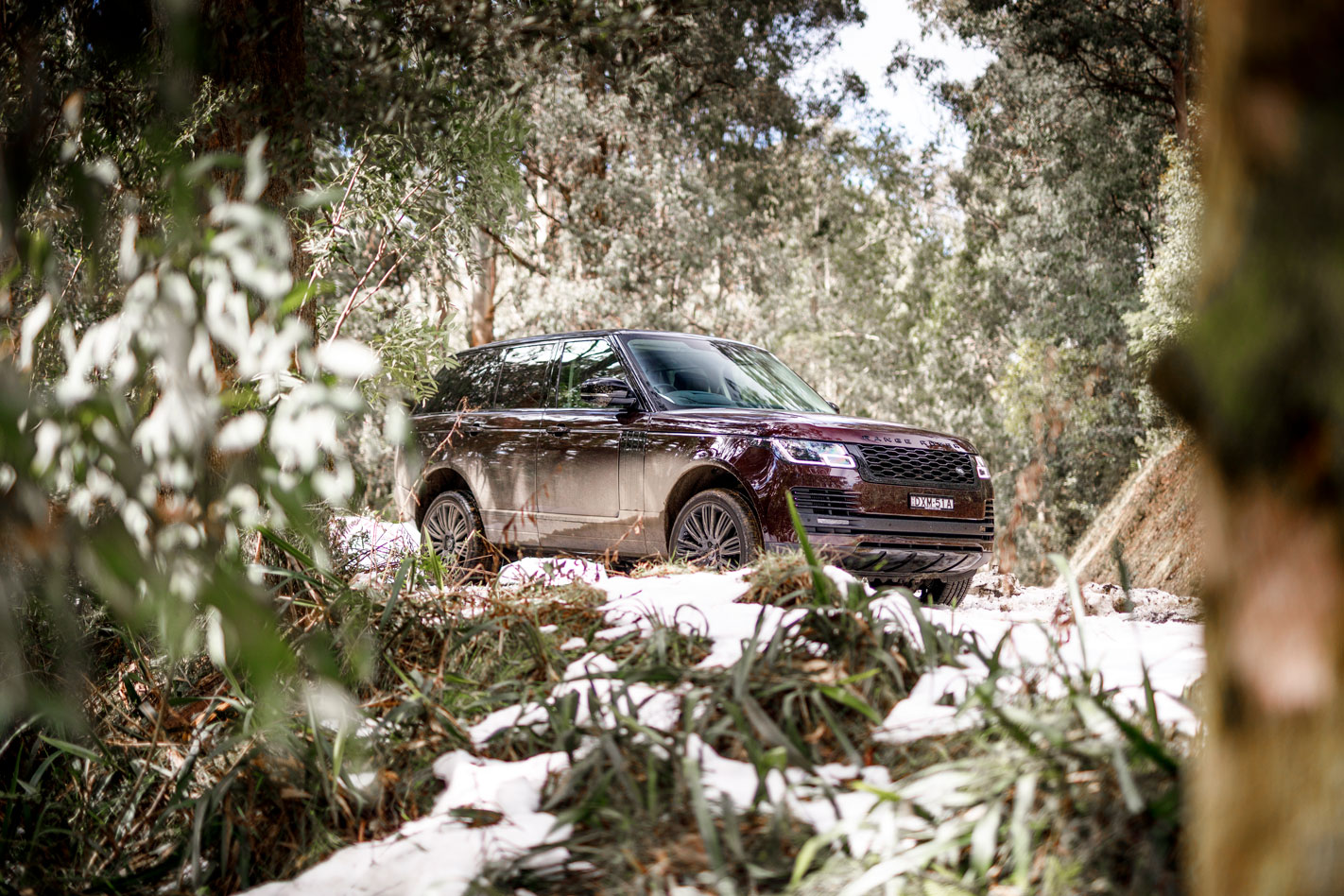
Priced from $256,000, the SDV8 Autobiography appears to offer a good balance of the power, practicality and the luxury that continues to draw people to the brand. While Range Rover claims the supercharged petrol V8 uses up to nearly 14.0L/100km on average, during our time with the diesel-drinking SDV8 it used under 10.0L/100km.
Ours had a few extras thrown at it including a panoramic sunroof, Pixel-Laser LED headlights and massive 22-inch wheels that replace the 21-inch standard items, pushing the bottom line to $269,820 before on-road costs.
You could spend a lot less on an upper-large off-roader, but besides the iconic brand and luxury features, Range Rover has also built a reputation for class-leading off-road ability, and that narrows the field of rivals considerably.
STANDARD FEATURES
Customers expecting to get a decent amount of kit for their cash won’t be disappointed with the mid-range Rangie. Included in the price are an eight-speed automatic transmission, air suspension, and a number of electronic programs for the four-wheel drive system to boost off and on-road ability.
Cabin luxury is courtesy of semi-aniline leather seats with 24-way electric adjustment, heating, cooling and massage for the front row, while the rear seats were upgraded to Executive which brings electric adjustment and heating. Ambient lighting, an electrically-adjustable steering column and even a refrigerated compartment in the front centre console are other luxurious highlights of the feature list.
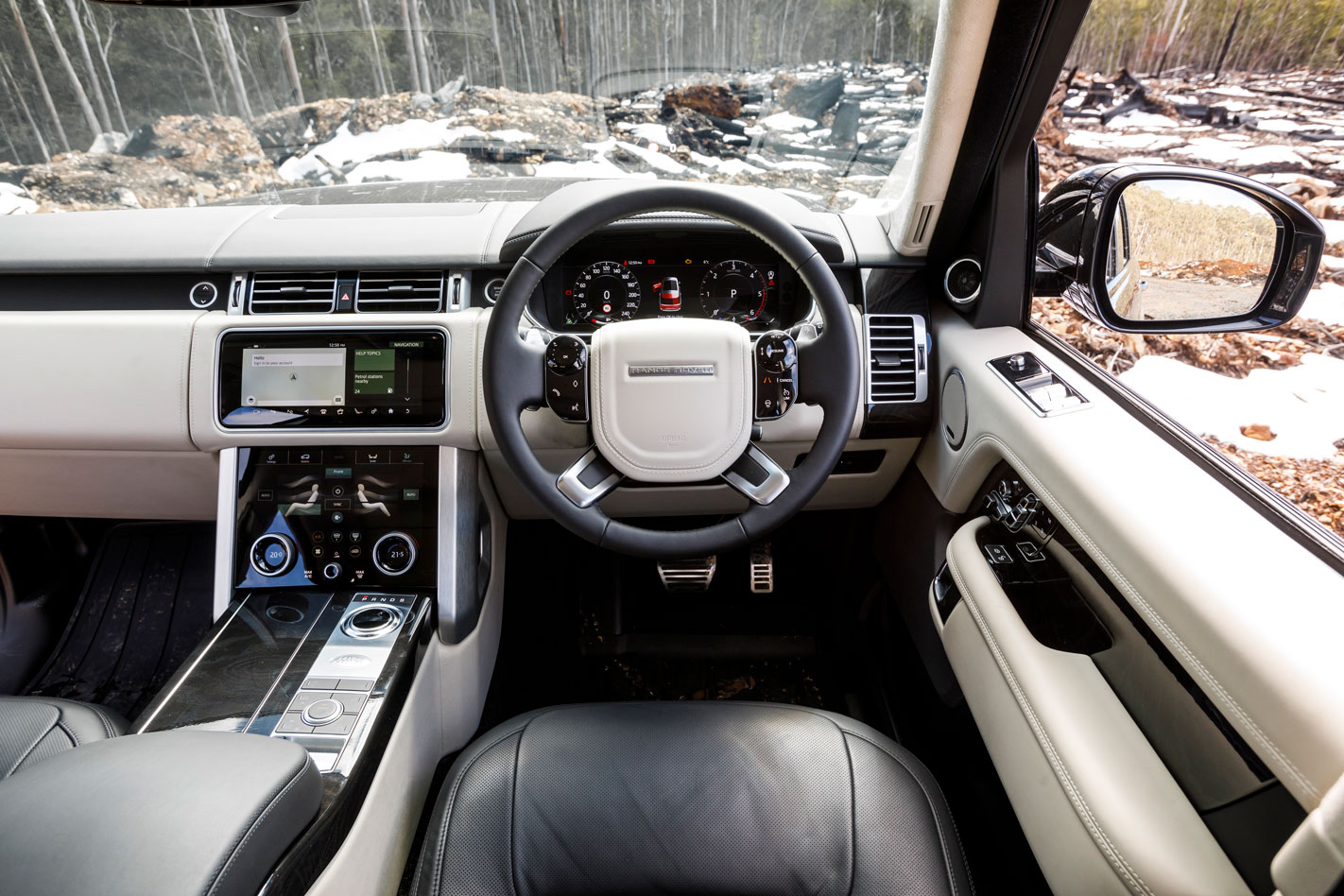
A large 10-inch central touchscreen is the hub for interacting with all of this technology, and sits atop an equally expansive multi-function touchscreen panel that controls audio, climate and vehicle settings. Satellite navigation is included, naturally.
Other neat features include a large optional sunroof that can be opened with hand gestures, soft closing doors, digital TV, top-shelf Meridian sound system and a fully digital driver’s instrument cluster.
Range Rover’s optional Activity Key is unique and allows the conventional key to be locked inside the car using a waterproof wrist band. Instead of hiding the actual keyfob outside the vehicle or risk damaging or losing it, participants of outdoors activities can simply hold the wrist band close to a sensor in the bootlid to lock or gain access to the car.
SIZE
The Range Rover is firmly at the large end of the SUV segment, measuring 5.0 metres in length, 2.0 metres wide and standing 1.9 metres tall.
Grand exterior dimensions do not translate to a cavernous luggage area. In the name of luxury, the range Rover donates space for people and not things. The boot is still a respectable 479 litres but, by sacrificing the second row of folding seats, it can be expanded out to nearly 2000 litres.
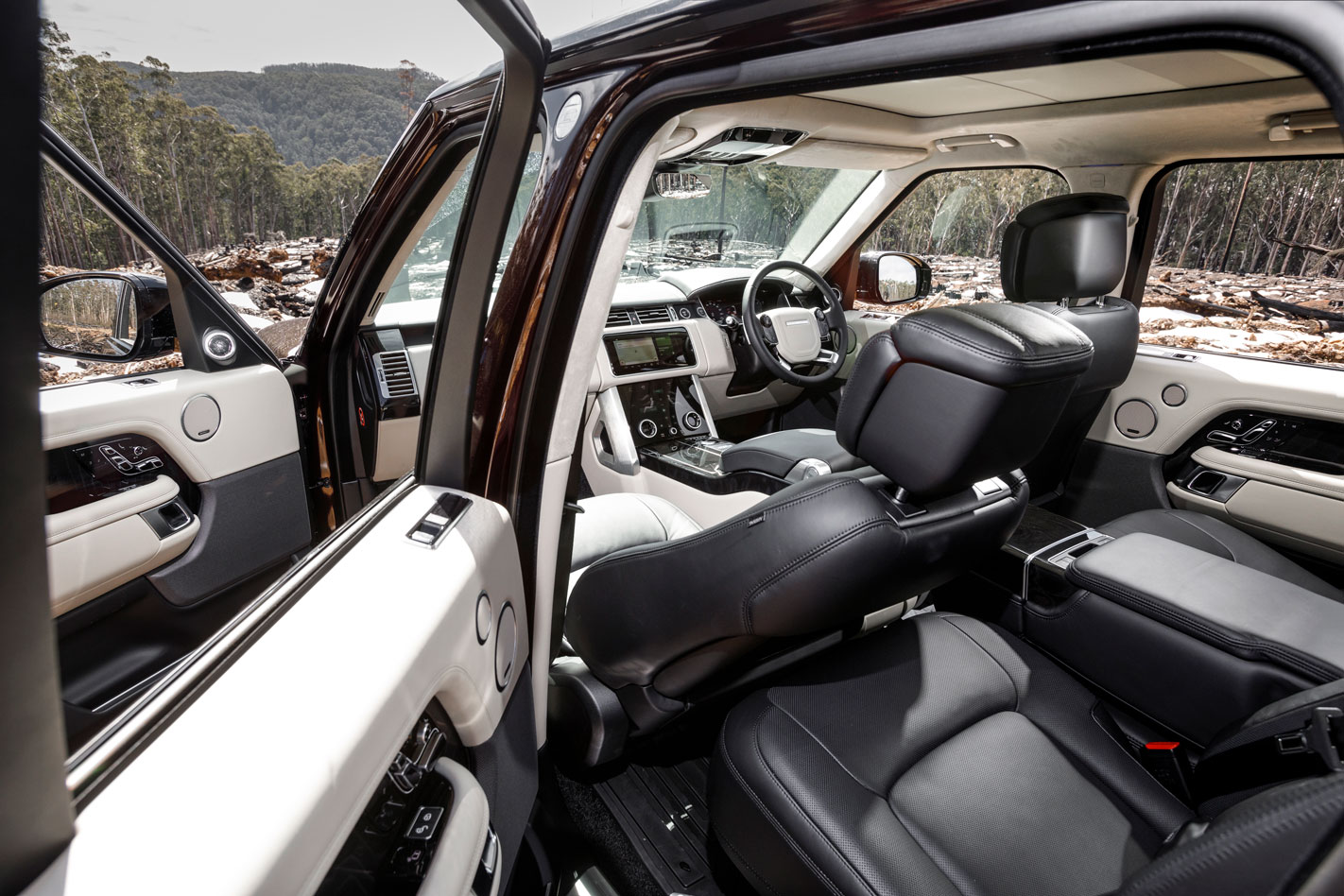
For the same reason the Range Rover is not offered as a seven seater, but four out of the five seats that are provided are class-leading for their space and comfort. The central seat in the second row does not offer the same features as the outboard positions, such as heating or power adjustment, and converts into a generous central arm rest when not in use.
The Executive Class rear seats fold electrically, which seems somewhat of an unnecessary indulgence until you discover they can be operated remotely using a smartphone application, which is useful when returning to the car with large items.
SAFETY
Range Rover has packed in as much safety equipment as it has luxury features, with autonomous emergency braking (AEB), adaptive cruise control, ISOFIX child seat anchors in the back seats, tyre pressure monitoring, 360-degree camera with front and rear parking sensors and curtain airbags.
Our car had also been optioned with an $820 Drive Pack which added blind spot monitoring and a driver condition monitoring feature which warns the driver if they are becoming fatigued or drowsy.
ANCAP has not yet awarded the new Range Rover a safety rating.
COMFORT
Comfort is what the Range Rover is all about and the sublime ride is one of the first qualities that strikes you on any journey. In all four main seats, support is exemplary with top-quality materials and highly adjustable seats. Even the rear seats have heating and electrical adjustment.
After a day touring the Victorian high country, it took just minutes for occupants in the front and rear seats to fall asleep, thanks in part to the silky ride and whisper quiet cabin. Both front occupants particularly appreciated the massage function too.
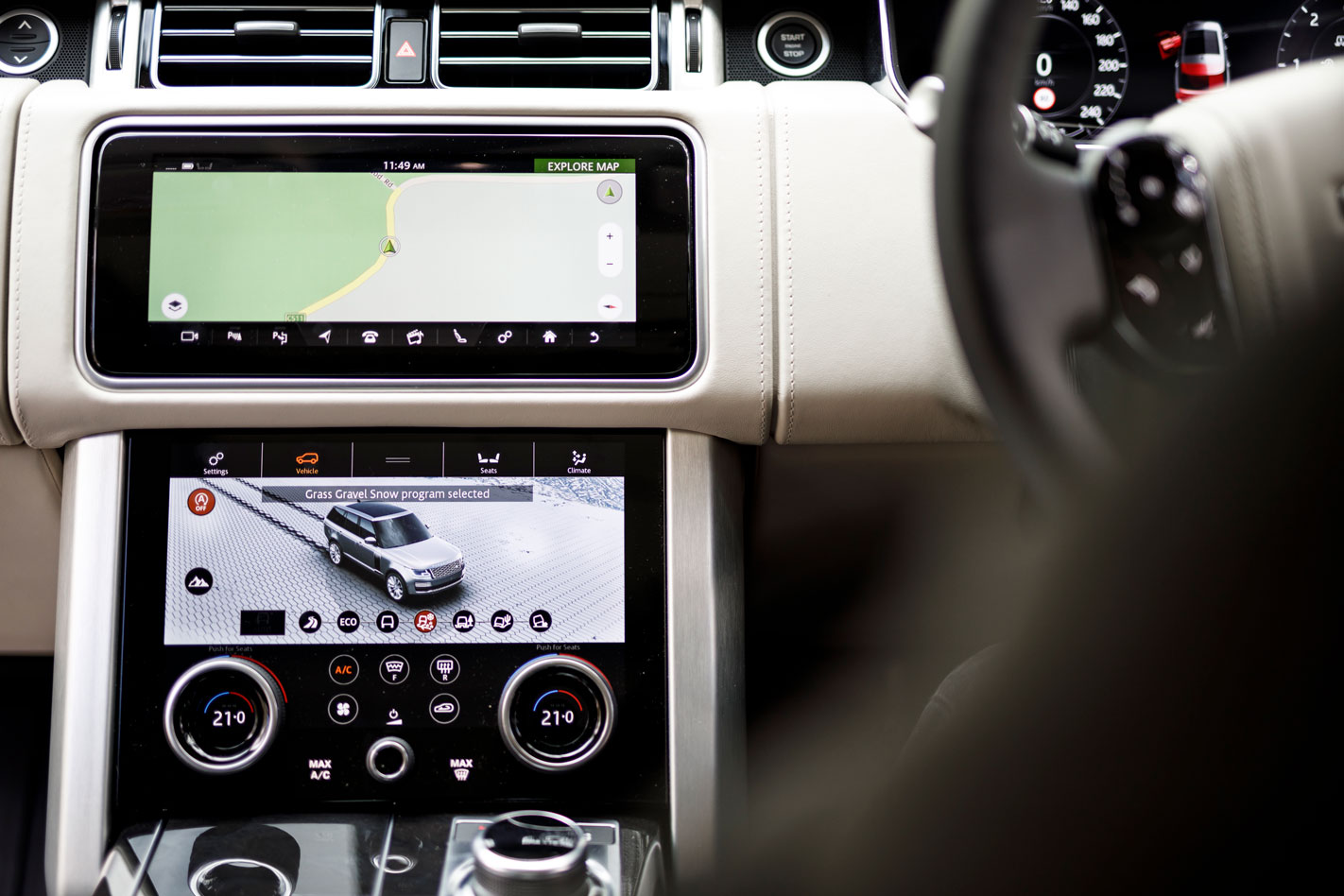
A vast panoramic roof keeps the cabin light and airy and the large glass area makes visibility of surroundings excellent for all aboard. When the sun sets, multicolour ambient lighting bathes the interior in customisable colour schemes and imparts a deep sense of class.
At the end of a long day, an intuitive and logical information and entertainment system was a welcome feature, allowing a navigation destination to be easily entered without requiring much concentration from a tired mind although, unlike many rival luxury brands, destinations cannot be entered using voice control. After that, it was simply about loading a play list and relaxing.
ON THE ROAD
With swathes of torque from the Range Rover’s turbocharged V8, the three-ton off-roader is capable of surprising pace and its maker says it can accelerate to 100km/h from standstill in less than 7.0 seconds. It also has a raft of clever air suspension and chassis tricks to control the hefty body if you insist on pushing it through corners.
When prodded, the big diesel sounds great and produces enormous pulling power without having to rev high, and its eight-speed automatic transmission is notable for its subtlety.
But, even though the Range Rover has the potential to go fast, it rarely makes you want to. Such is its ability to cosset and calm occupants, we found elegantly gliding around was the preference over blasting other cars off the road.
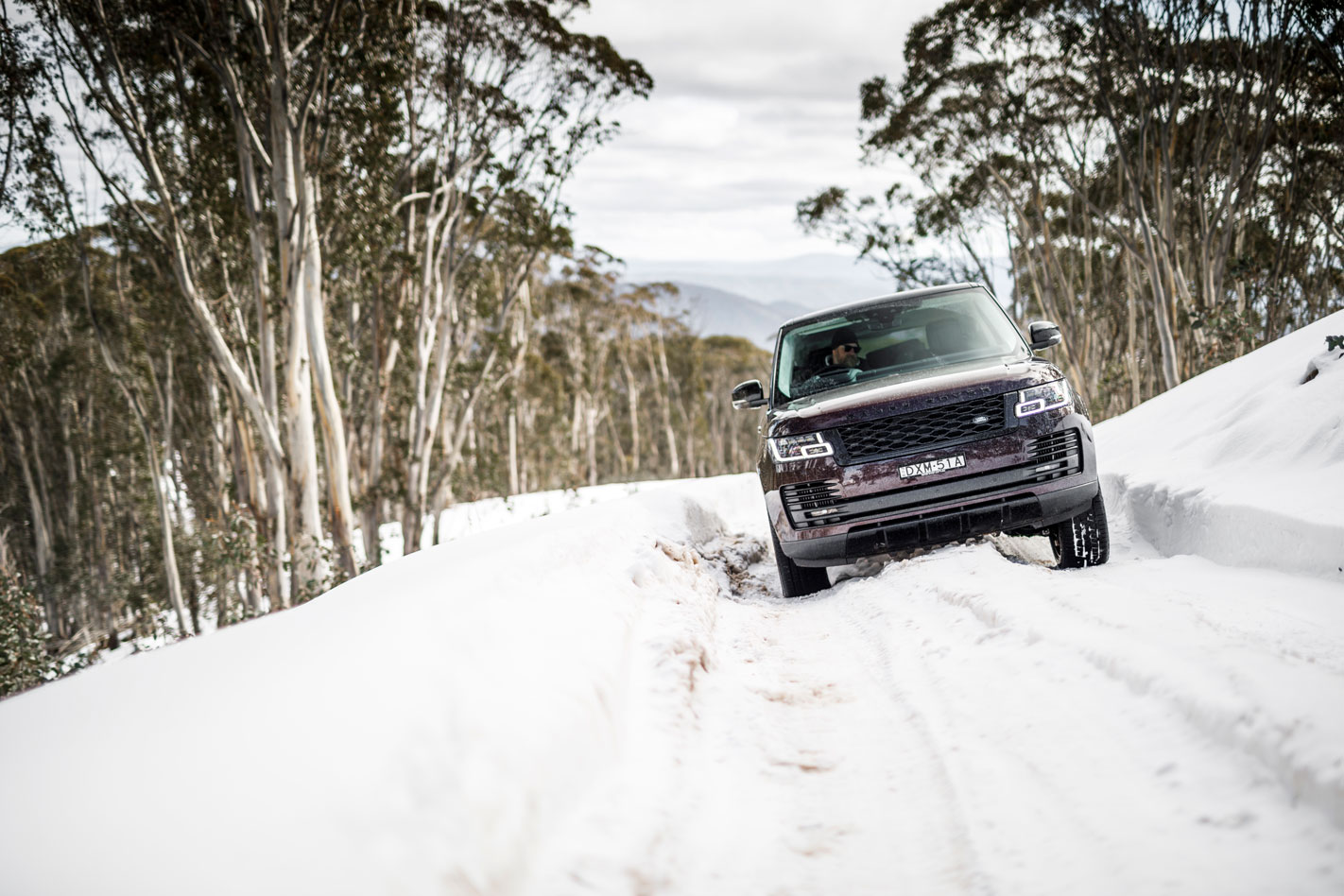
But this is a Range Rover and a trip above the snow line tested all its clever traction trickery to the very limit. On standard mud and snow tyres wrapped around optional 22-inch wheels, the big SUV is incredible in its ability to deal with surfaces that have almost no bite.
We found a patch of untouched snow somewhere on Mount Stirling and revelled in the SDV8’s ability to progressively lock differentials and vector torque from one wheel to another, with seemingly little intervention from the driver. Despite the relatively soft snow and minimal grip, we avoided getting stuck and the embarrassing scenario of asking someone with a Japanese pick-up to help out.
VERDICT
With the rise in popularity of dual cab utes, it’s clear Australians love the idea of a family car that can venture far from the beaten track, and with the arrival of six-cylinder diesel one-tonners from Volkswagen and Mercedes-Benz, there is a growing high-performance and premium audience too.
Take several giant leaps in the same direction and you’ll arrive at the Range Rover – a vehicle that ups comfort and refinement to 11 without compromising all-terrain ability.
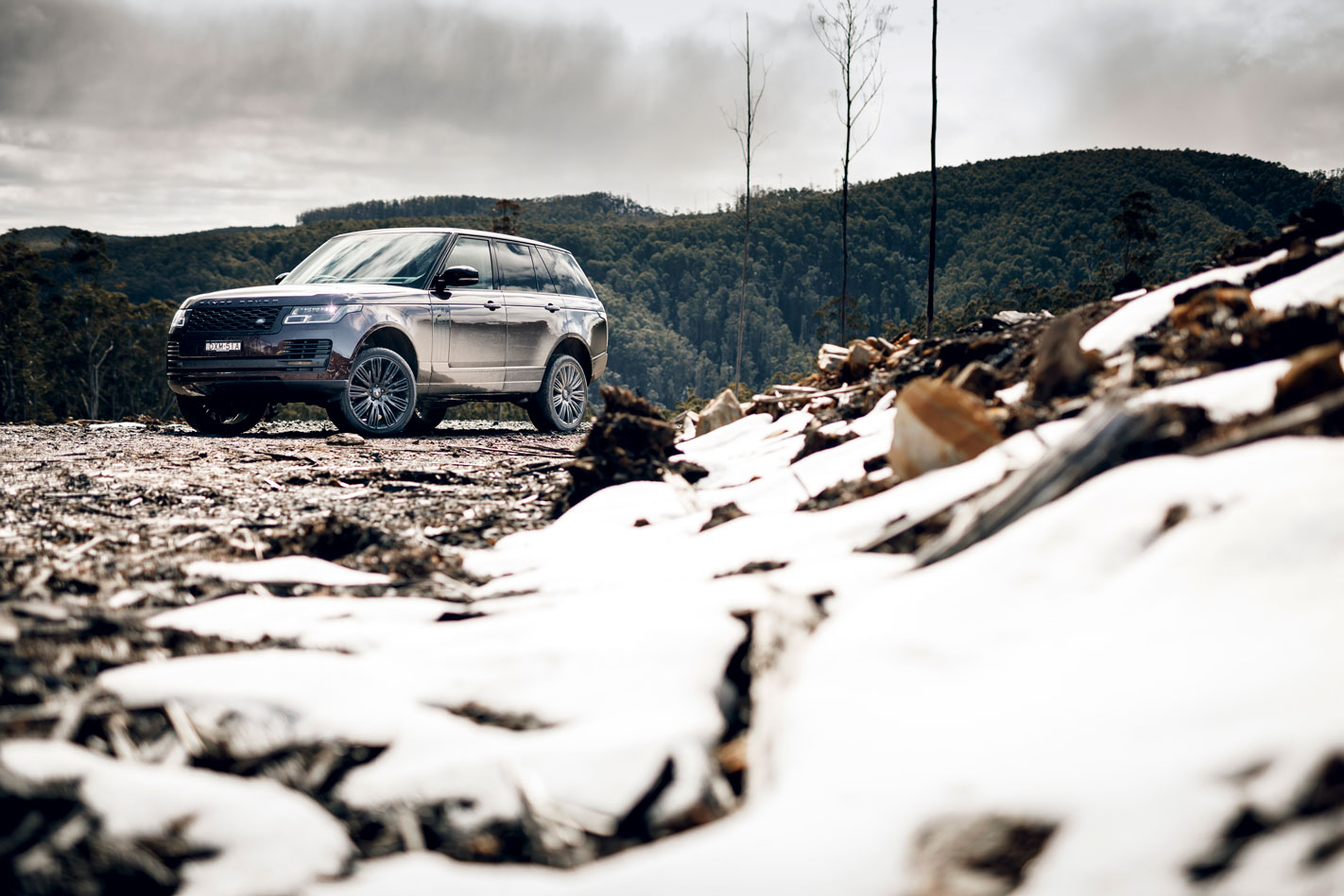
There are other large four-wheel drives that offer extensive luxury features and powerful drivetrains including Audi’s SQ7 or perhaps the new Porsche Cayenne, but the Range Rover bundles in a traction management system that borders on wizardry.
And if you’re after a rival that can rain on the Range Rover’s party with a similar balance of opulence and off-road nous, you’ll need to fork out about an extra $429,000 for a Rolls Royce Cullinan.




